In today's digital age, marketing strategies are constantly evolving. Have you heard of conversational marketing? It's a new approach that is changing the way businesses interact with their customers.
Traditional marketing methods often involve one-way communication, where companies push their message to consumers. However, conversational marketing takes a different approach by focusing on creating meaningful, two-way conversations with customers.
Conversational marketing is all about engaging customers in personalized conversations, using various communication channels such as chatbots, live chat, and social media. By adopting this strategy, businesses can build stronger relationships with their audience and ultimately drive more conversions.
In this article, we will explore the concept of conversational marketing, its benefits, and how you can implement it in your marketing strategy.
|
Conversational Marketing |
What Is Conversational Marketing?
Conversational marketing is a two-way communication strategy that prioritizes real-time, personalized interactions between brands and customers. It creates an authentic customer experience that helps build relationships with both current and potential clients.
It leverages various channels, including live chat platforms, chatbots, and social media messaging apps, to initiate meaningful conversations. Unlike traditional one-sided marketing, conversational marketing focuses on actively listening to customer needs, addressing queries promptly, and delivering value throughout the buyer's journey.
Drift created the Conversational Marketing category because they saw how the traditional B2B sales process alienated buyers, even though buyers were now calling the shots.
Instead of forcing people to fill out long form fields and wait hours for a reply, Drift built a conversational marketing tool that allows you to use targeted messages and intelligent chatbots to engage with them when they’re on your site.
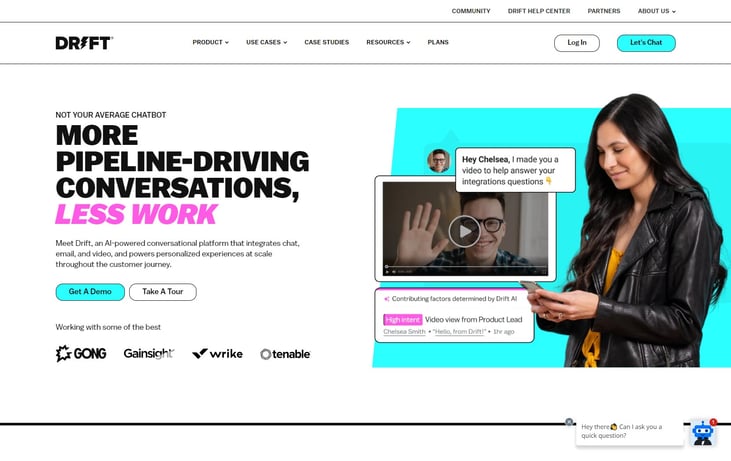
The Key Elements of Conversational Marketing
Effective conversational marketing goes beyond casual chats; it involves a structured and strategic approach to engaging with your audience. To craft a successful conversational marketing strategy, you need to consider several key elements that ensure seamless interactions and meaningful connections.
Here's a breakdown of these essential components:
1. Targeted Audience Segmentation
Segmentation is the foundation of any marketing strategy, and conversational marketing is no exception. You need to understand your audience's preferences, pain points, and behaviors to create targeted conversations.
By segmenting your audience, you can tailor your messaging, content, and approach to resonate with each group's unique needs.
2. Personalized Messaging
Conversational marketing thrives on personalization. Generic, one-size-fits-all messages won't cut it. Instead, craft personalized messages that address your audience's specific concerns and interests.
Leverage the data you've collected about your leads and customers to create messages that feel tailor-made for them.
3. Real-Time Engagement
One of the defining features of conversational marketing is real-time engagement. When a prospect or customer initiates a conversation, respond promptly.
The longer you make them wait, the more likely they are to lose interest or seek information elsewhere. Use live chat, chatbots, and messaging apps to provide instant responses and keep the conversation flowing.
4. Contextual Understanding
Context matters in conversational marketing. To provide meaningful responses, you need to understand the context of the conversation.
If a customer is asking about a specific product, make sure your response is relevant to that product. Being contextually aware shows that you're genuinely attentive and responsive to your audience's needs.
5. Omnichannel Consistency
Conversational marketing often spans multiple channels, from your website's live chat to social media platforms and messaging apps. It's crucial to maintain consistency across these channels.
Customers should receive the same level of service and information, regardless of where they initiate the conversation. This ensures a unified brand experience.
6. Engagement Automation
While real-time engagement is essential, automation can also play a significant role. Chatbots, for instance, can handle routine queries and guide users through simple processes, freeing up your team to focus on more complex interactions.
However, remember that automation should complement, not replace, human interaction.
7. Data Collection and Analysis
Every conversation is an opportunity to gather valuable data. Collect information about customer preferences, pain points, and frequently asked questions.
Analyze this data to identify trends and insights that can inform your marketing strategy, product development, and content creation.
8. Continuous Improvement
Conversational marketing is a dynamic process that requires continuous improvement. Regularly assess your conversations, analyze customer feedback, and refine your approach.
This iterative process allows you to fine-tune your strategy, enhance customer satisfaction, and drive better results over time.
The Role of Personalization in Conversational Marketing
In an era where personalization reigns supreme, conversational marketing shines. By utilizing customer data and insights, businesses can deliver tailored recommendations, solutions, and product suggestions during conversations.
Research indicates that 80% of consumers are more likely to make a purchase when brands offer personalized experiences. Whether it's addressing customers by name or recommending products based on their preferences, personalization fosters a deeper connection and increases the likelihood of conversion.
Benefits of Conversational Marketing
In a digital landscape characterized by information overload and rapidly changing consumer behaviors, a conversational marketing strategy is no longer a mere option – it's a necessity.
Here's why you need to embrace this dynamic approach to engage, convert, and retain your audience effectively:
1. Customer-Centric Engagement
Traditional marketing methods often involve broadcasting messages to a wide audience, hoping to catch the attention of a few interested individuals. Conversational marketing, on the other hand, revolves around customer-centric engagement.
By initiating real-time conversations, you meet your audience where they are, addressing their queries, concerns, and preferences promptly. This personalized interaction not only enhances customer satisfaction but also fosters a sense of connection and brand loyalty.
2. Immediate Responses for Elevated Customer Experience
In the age of instant gratification, consumers expect immediate responses. A staggering 82% of customers expect an immediate response to sales or marketing questions.
Conversational marketing enables you to meet this demand by providing instant assistance through channels like live chat and chatbots. This not only leads to an elevated customer experience but also significantly reduces the chances of potential customers abandoning your site due to a lack of information.
3. Seamless Buyer's Journey
Conversational marketing seamlessly integrates with the buyer's journey at every stage. From the awareness phase, where visitors seek information, to the decision phase, where they need clarification, real-time conversations provide the guidance and support necessary for informed decisions.
For instance, by answering questions promptly, you can address objections and guide potential customers toward making a purchase.
4. Enhanced Lead Generation and Qualification
Conversational marketing acts as a powerful lead generation and qualification tool. By engaging prospects in meaningful conversations, you can gather valuable insights about their pain points, needs, and preferences.
This information not only helps tailor your offerings but also aids in segmenting your audience effectively. As a result, you can nurture leads more effectively and deliver content that resonates with their specific interests.
5. Data-Driven Decision Making
Conversational marketing is not just about conversations; it's also about collecting data that fuels your marketing strategy. By analyzing chat transcripts and engagement metrics, you gain valuable insights into customer behavior, preferences, and pain points.
This data-driven approach empowers you to refine your offerings, optimize your marketing campaigns, and make informed decisions that resonate with your audience.
6. Competitive Edge
In a competitive market, customer experience is often a key differentiator. Implementing conversational marketing gives you a competitive edge by providing a level of personalized engagement that sets you apart.
As per a study, 60% of customers say they're more likely to do business with companies that offer personalized experiences. By prioritizing customer interaction and understanding, you build trust and loyalty that can't be replicated easily.
7. Seamless Integration with Multiple Channels
Conversational marketing doesn't operate in isolation; it seamlessly integrates with various marketing channels. Whether it's chatbots on your website, messaging apps on social media, or even SMS marketing, your conversations can flow seamlessly across platforms.
This cohesive interaction enhances the customer experience and provides a unified brand voice, regardless of the channel your audience prefers.
How to Implement Conversational Marketing
Implementing conversational marketing requires a well-thought-out plan and a commitment to delivering exceptional customer experiences.
Here's a step-by-step guide to help you effectively implement conversational marketing in your strategy:
1. Define Your Goals and Objectives
Start by setting clear goals for your conversational marketing efforts. Are you looking to increase lead generation, improve customer support, drive sales, or enhance brand engagement?
Having specific objectives will guide your strategy and help you measure its success.
2. Choose the Right Tools and Platforms
Select the tools and platforms that align with your goals. This could include live chat software, chatbots, messaging apps, and social media platforms.
Choose tools that allow for seamless integration across channels, ensuring a unified experience for your audience.
3. Segment Your Audience
Segmentation is essential for tailoring your conversations. Divide your audience into meaningful segments based on demographics, behaviors, interests, and pain points.
This enables you to create personalized messages that resonate with each group.
4. Craft Conversational Content
Develop content that facilitates conversations. This includes pre-scripted responses for common queries, as well as personalized content that addresses specific customer needs.
Your content should be engaging, informative, and designed to drive interactions.
5. Implement Live Chat and Chatbots
Integrate live chat functionality on your website to provide real-time responses. Additionally, consider using chatbots to handle routine inquiries and guide users through simple processes.
Chatbots can operate 24/7, ensuring no lead or customer goes unanswered.
6. Optimize User Experience
Ensure that your conversational interfaces are user-friendly and intuitive. Visitors should find it easy to initiate conversations and navigate the interaction.
Avoid complex jargon and ensure that the conversational flow feels natural.
7. Train Your Team
If human agents are part of your conversational strategy, provide training to ensure they understand the brand's voice, guidelines, and protocols. They should be able to engage in personalized conversations while maintaining professionalism and consistency.
8. Leverage Automation Wisely
While automation can enhance efficiency, don't overdo it. Use automation to handle routine tasks and guide users through basic interactions. For complex inquiries or situations that require empathy, human intervention is often necessary.
9. Monitor and Analyze Interactions
Regularly monitor and analyze the conversations you're having with your audience. Use analytics tools to track metrics such as response times, engagement rates, and customer satisfaction. This data will help you identify areas for improvement.
10. Iterate and Optimize
Based on the insights gathered from your interactions, continuously refine your conversational marketing strategy. Adjust your content, messaging, and processes to better align with your audience's needs and preferences.
11. Collect Customer Feedback
Actively seek feedback from customers about their conversational experiences. This will provide insights into what's working and what needs improvement. Customer feedback is invaluable for enhancing your strategy over time.
Conversational Marketing Examples
Let's explore some examples of conversational marketing in action. So let's dive in and see how businesses are using this strategy to connect with their audience!
1. Domino's Pizza
Domino’s recently announced it will allow customers to order pizzas via chatbot, phone call, SMS, and even the web. This isn’t just about convenience; it’s about creating a seamless customer experience across all platforms.
The pizza chain already offers delivery and online ordering options, but the addition of mobile ordering makes it easier than ever to place a pizza order.
Beyond that, Domino’s AnyWare lets customers order pizzas from anywhere.
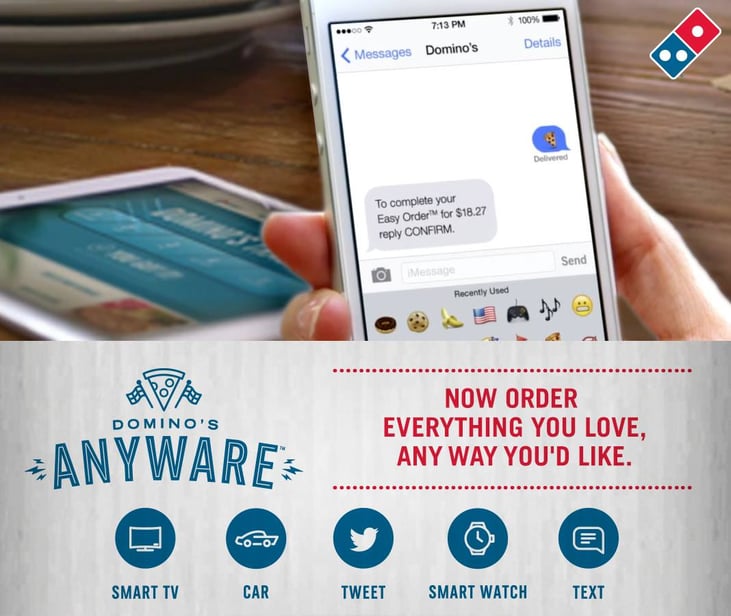
2. HubSpot
They used Facebook Messenger to allow people to sign up for their four-day campaign by texting. People loved the conversational user interface and encouraged their friends and colleagues to sign up quickly too.
And success wasn't simply about getting people to sign up for the live event. Instead, Facebook Messenger was the highest-converting channel for new product users to HubSpot Marketing Free.
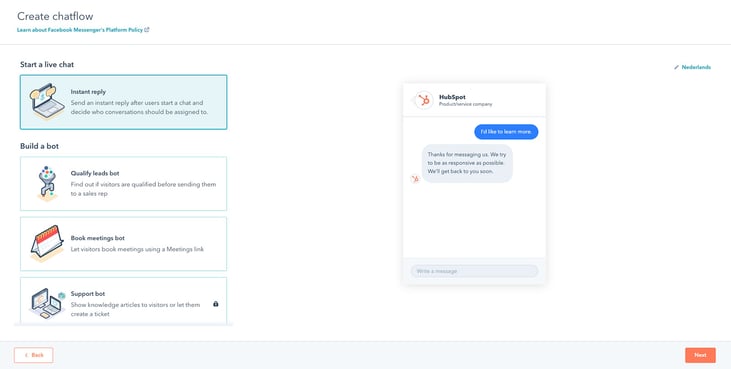
3. Drift
Drift allows customers to set up meetings directly with the company’s representatives. It also happens in their own time. This makes them more involved in the customer experience.
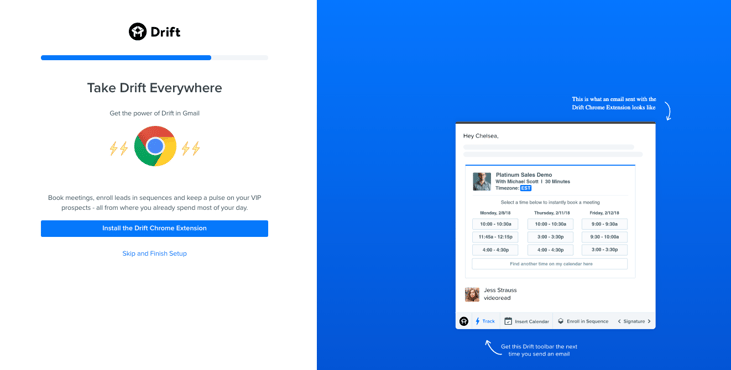
4. 1-800-Flowers
1-800-Flowers sells its product through Facebook Messenger. And they employ bots to help them guide customers through the sales cycle by walking them through each step.
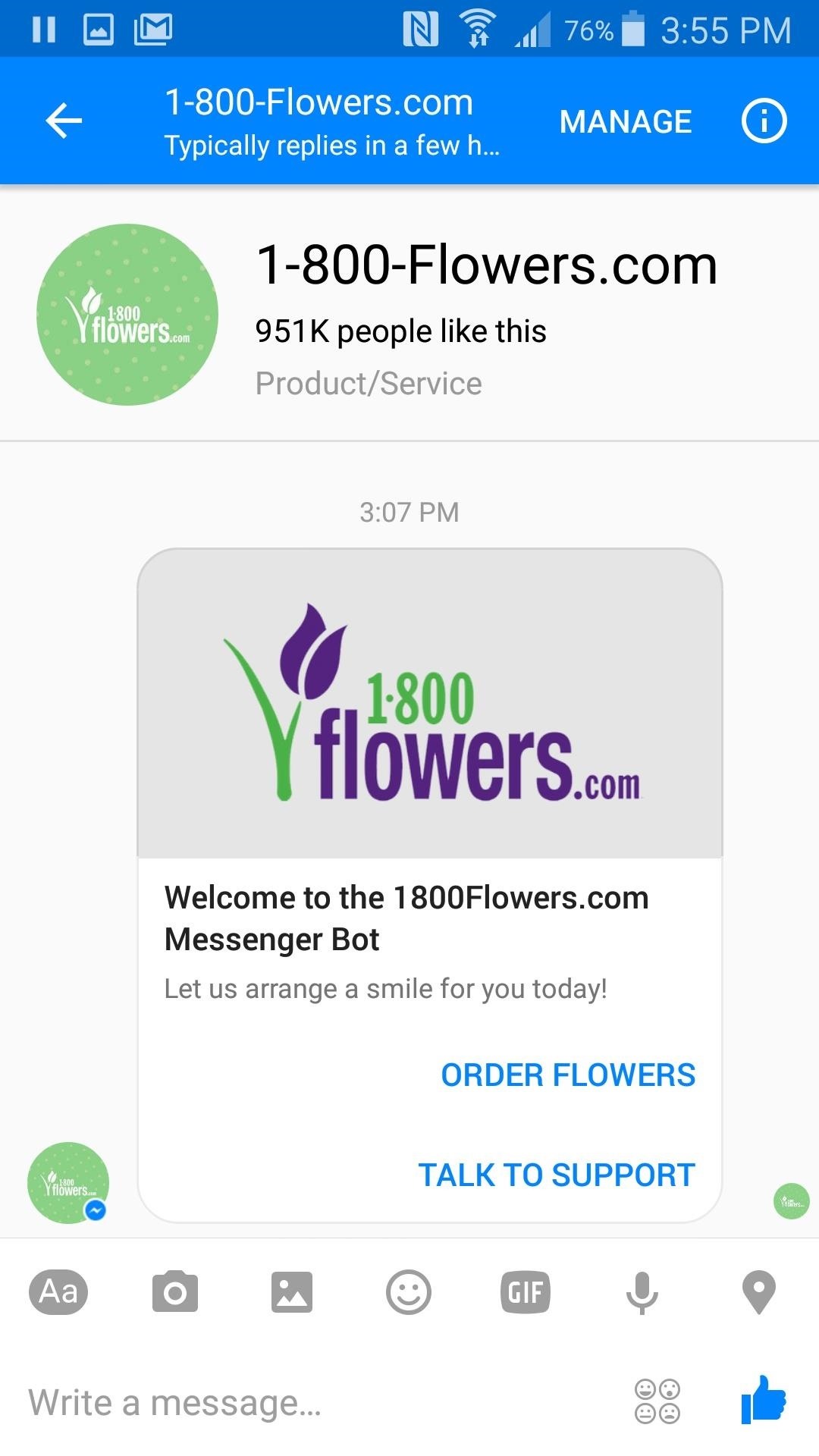
5. Lyft
There hasn't been any dispute about the benefits of using ridesharing apps, but Lyft has gone above and beyond by creating a chatbot that responds to customer questions.
With the new integration between Lyft, Messenger, Slack, and Alexa, you just need to click the "car" icon to get a ride from someone nearby.
Lyft has made the process of getting from point A to B easier and faster by using conversational marketing technologies.
Build a Conversation Strategy
Conversational marketing is more than a trend; it's a strategic approach to engaging and delighting customers in the digital age. By prioritizing real-time interactions, personalization, and authenticity, businesses can build strong relationships and drive meaningful results.
Whether you're in B2B or B2C, understanding and implementing conversational marketing can elevate your marketing strategy, fostering loyalty and growth. As you embrace this dynamic approach, remember that effective communication lies at the heart of every successful business-consumer relationship.
Conversational technology can improve your customer engagement strategy by offering additional channels through which you can communicate with them at any time.
Looking to implement conversational marketing in your strategy? Fine Media specializes in crafting tailored inbound strategies that include conversational marketing to drive engagement and conversions.
Contact us to explore how conversational marketing can transform your customer interactions and elevate your brand.



